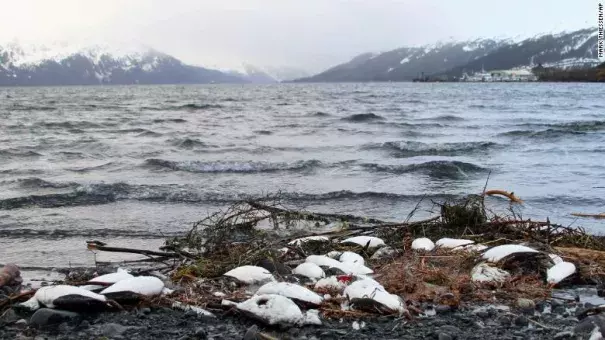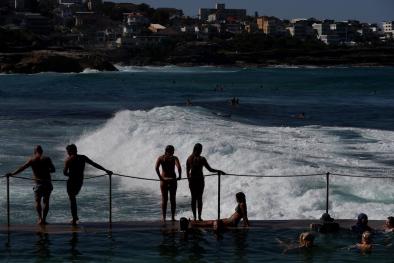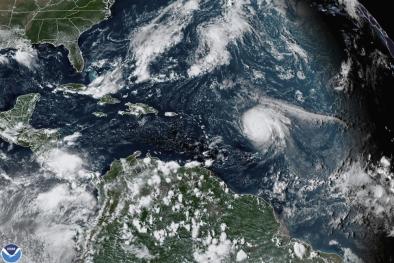A blob of hot water in the Pacific killed a million seabirds

Signals Summary: Climate change is increasing the amount of heat absorbed by oceans, making ocean heat waves more frequent and intense. From 2013-2015 an huge area of warm ocean water called the Blob formed in the Pacific Ocean, and climate change may have contributed to its formation.
Article Excerpt: As many as one million seabirds died at sea in less than 12 months in one of the largest mass die-offs in recorded history -- and researchers say warm ocean waters are to blame.
...
Now, scientists say they know what caused it: a huge section of warm ocean water in the northeast Pacific Ocean dubbed "the Blob."
A years-long severe marine heat wave first began in 2013, and intensified during the summer of 2015 due to a powerful weather phenomenon called El Nino, which lasted through 2016.
The heat wave created the Blob -- a 1,000-mile (1,600 km) stretch of ocean that was warmed by 3 to 6 degrees Celsius (5.4 to 10.8 Fahrenheit). A high-pressure ridge calmed the ocean waters -- meaning heat stays in the water, without storms to help cool it down.
Those few degrees of warming wreaked havoc on the region's marine ecosystems. There was a huge drop in the production of microscopic algae that feed a range of animals, from shrimp to whales. The warmth caused a massive bloom of harmful algae along the west coast, that killed many animals and cost fisheries millions of dollars in lost income.
Other animals that experienced mass die-offs include sea lions, tufted puffins, and baleen whales. But none of them compared to the murres in scale.
...
"The magnitude and scale of this failure has no precedent," said lead researcher John Piatt in a University of Washington press release. "It was astonishing and alarming, and a red-flag warning about the tremendous impact sustained ocean warming can have on the marine ecosystem."
The study warned that it remains unknown how long it would take for the population to recover -- or if it would recover at all, "in light of predicted global warming trends and the associated likelihood of more frequent heatwaves."
There have been several other marine heat waves emerging in recent months. In September 2019, the University of Washington researchers discovered one almost as big as the Blob, forming off the coast of Washington state -- and they're bracing for its potential effects.
Another blob has also formed off the eastern coast of New Zealand. This blob is so big it's detectable from space -- it's about a million square kilometers (400,000 sq miles), an area larger than the size of Texas.
It's especially rare to see a patch of warm ocean water over such a large area, but scientists say global climate change is making these phenomena more common.
Related Content




